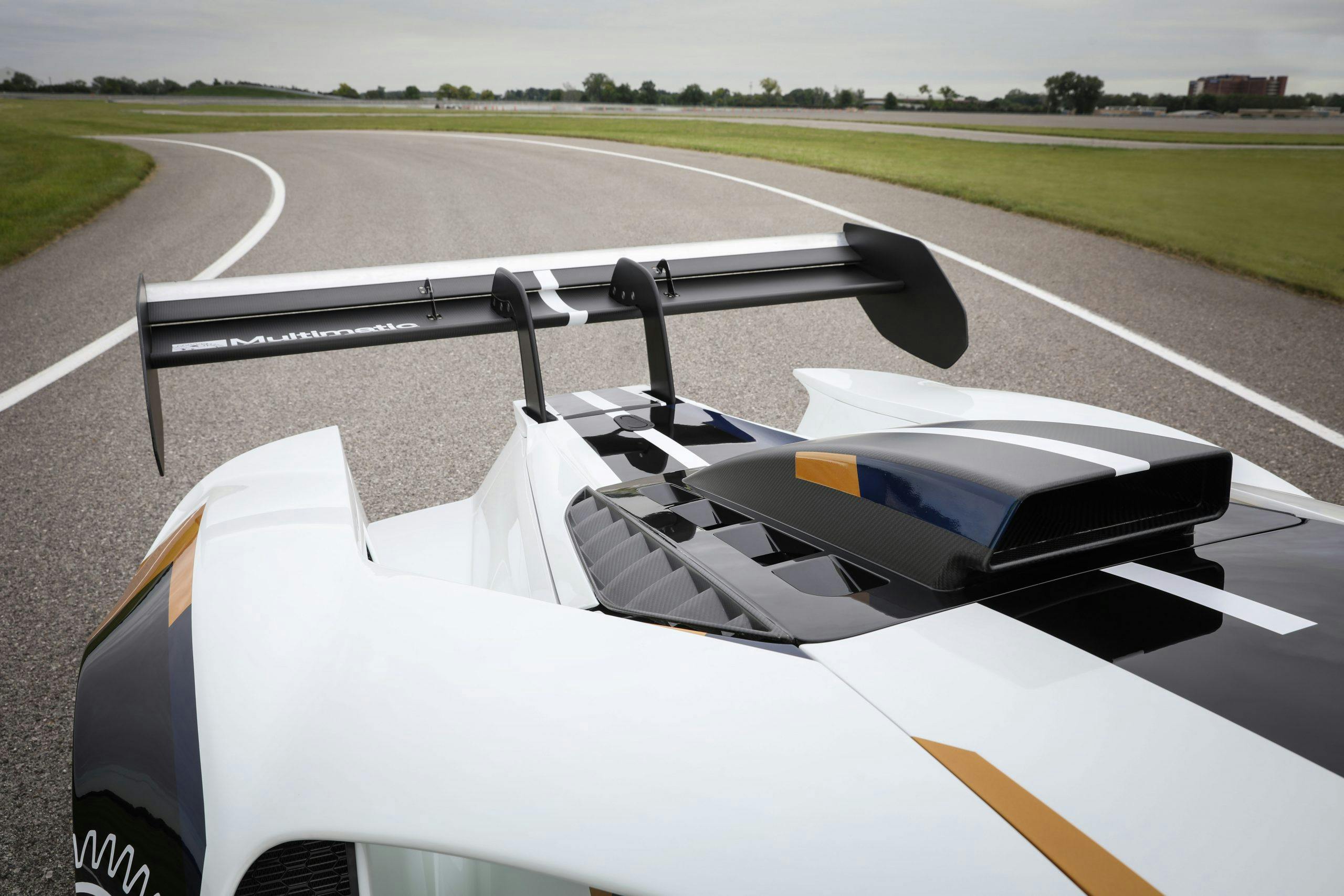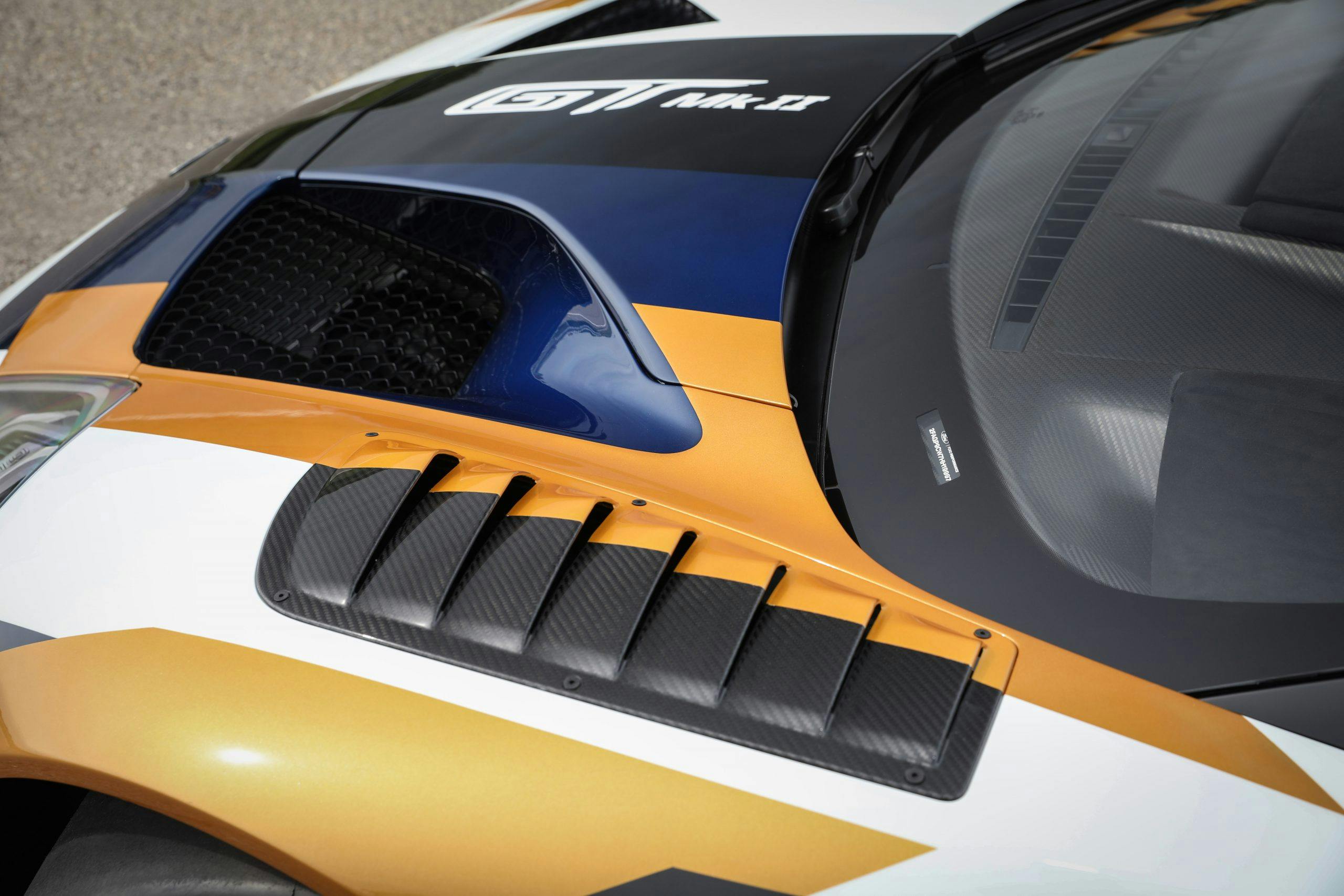Media | Articles
Ford vs. Mansory: Who did the GT better?
We don’t expect you to take long to decide which of these two ultra-exclusive, customized vehicles did it better. The Le Mansory is one of three Ford GTs rebodied and tuned by Mansory. (The first is accented in blue, and you can buy it for roughly $2.1 million; the third doesn’t exist yet.)
The tamer interpretation is the first GT from Ford’s Studio Collection, a run of 40 cars from the 2021 and 2022 model years that will receive hand-painted custom accents. The example before you here appears in Shadow Black with Competition Orange accents, though you’d be hard-pressed to tell with the dim lighting.

Despite the nameplates’ all-American reputations, there’s a strange confluence of nationalities surrounding the original GT40 and the modern Ford GT. The first three variations of the GT40 (until the Mk IV) were powered by Ford but designed and built in Britain. The 2017–current model was designed by Ford and built by Canada’s Multimatic. With that cosmopolitan background, perhaps it isn’t too surprising that one particularly fortunate—or unfortunate—Ford GT then took a trip across the pond to Germany’s Mansory, whose slogan is “more than tradition, more than racing.”
That phrase is quite apt for this particular Mansory. To see why, let’s put the second Le Mansory beside the limited-edition, track-only GT Mk II, built by Multimatic as an all-out track monster without any regulatory constraints.
Clearly, Mansory and Multimatic had some of the same instincts, as far as aerodynamic add-ons go. Both added extra fins on the front fascia, those little ridged vents atop each front fender (though Multimatic’s are obviously functional), and top-mounted scoops. Mansory’s air-grabbers are perched atop the roof and, to our eyes, less well-integrated. Multimatic saw fit to mount a more snorkely scoop further back on the roof:
Marketplace
Buy and sell classics with confidence
In short, Mansory saw Multimatic’s bet … and raised it exponentially. Given the Canadian firm’s more, ahem, established racing pedigree, we’re immediately skeptical whether Mansory’s additional rear brake ducts, engine ducts, and eyebrow fins (huh?) actually improve downforce and cooling or simply look edgy. Multimatic’s aerodynamic tweaks quadrupled the downforce of the “normal,” road-going GT for a total of 1700 pounds at 150 mph, so its designers proved their mettle. Put this Le Mansory in a wind tunnel, and let’s get some numbers.
Either way, the gargantuan wing on the German-designed GT makes Ford’s in-house version look positively wimpy.
Three exhaust tips are cooler than two, even if the number falls short of Pagani’s four. Fifty points to Germany. However, Multimatic’s all-out racing configuration has Mansory beat on rear diffuser size.

Mansory, to its credit, didn’t stop with a custom carbon-fiber body; the latest Le Mansory boasts an engine tune that, judging by output numbers, is nearly identical to that performed by Multimatic. The stock Ford GT made 647 hp from its twin-turbo, 3.5-liter EcoBoost V-6, and the LM GTE Pro racer 495. Multimatic and now Mansory raise that figure to 700 hp, with 619 lb-ft of torque.
This Le Mansory’s interior, as befits a creation that will likely never see a track day, got a posh, leather reinterpretation. Ford hasn’t graced our eyes with any interior shots of its interpretation, but we suspect there are fewer chevrons involved.

Readers, now it’s your turn. Who does tricked-out GT better—Ford or Mansory?
























Mansory it’s better because the mansory was offically upgrade the exterior, interior, and engine. The whole car was completely changed